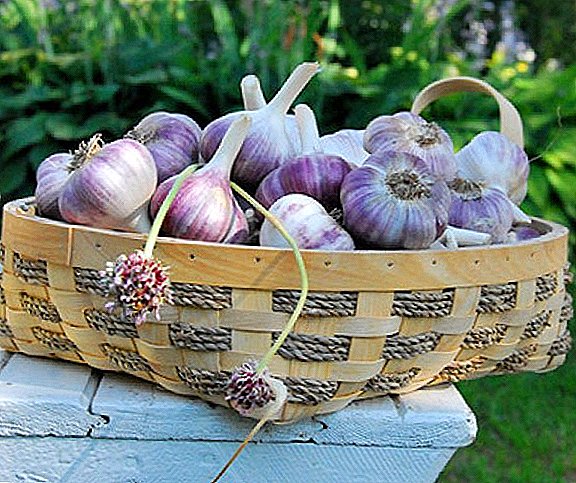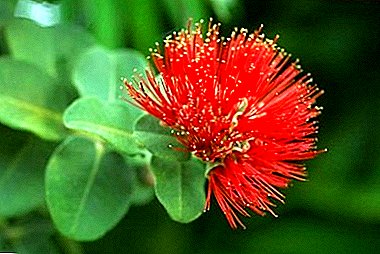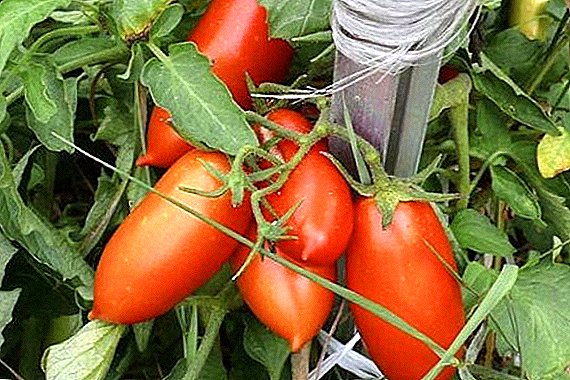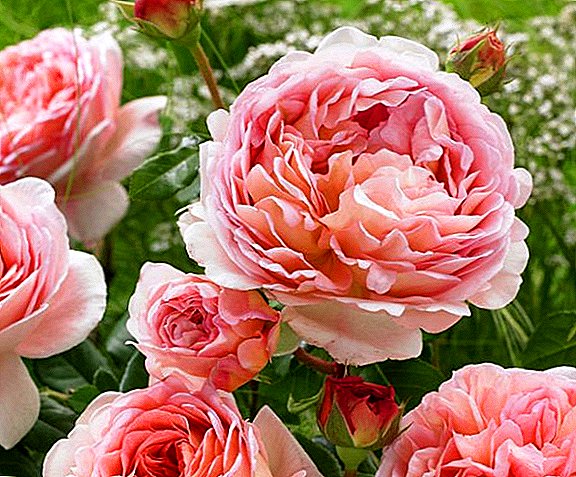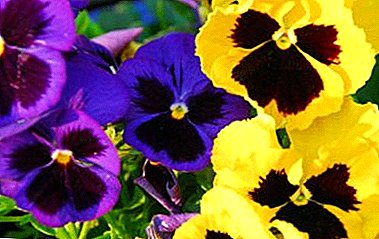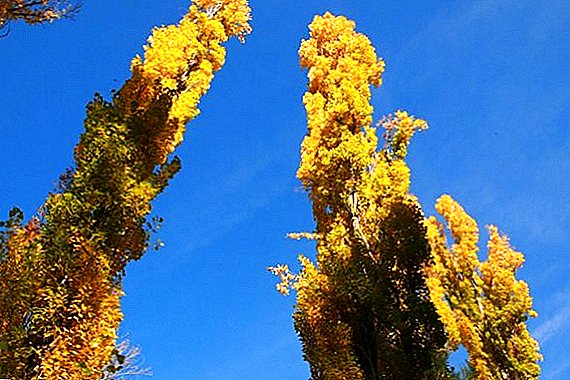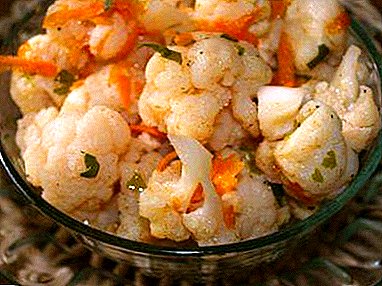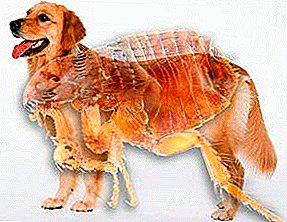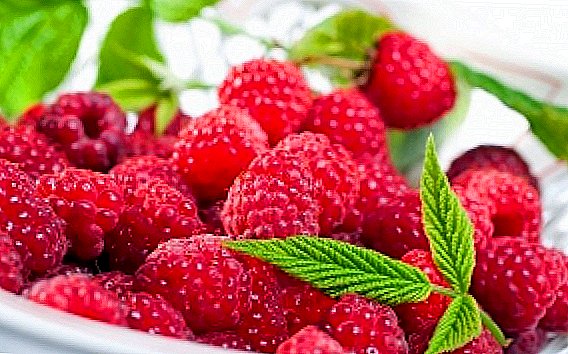
Raspberries are a living culture just like potatoes with tomatoes.
Therefore, it is exposed to various viruses, bacteria and insects that can greatly harm these plants.
It is better to notice and prevent the development of the disease in time than to wait until it passes by itself.
Some pests and diseases can lead to the destruction of the bushes, which will be a very unpleasant surprise for you. But you need to know the enemy in person.
So, before you a list of the most common diseases and pests of raspberries.
Gray rot

This fungal disease affects the entire ground part of the bush: foliage, flowers, fruits, the lower part of the shoots. A gray bloom appears on the leaves and berries. With prolonged exposure to this "pubescence" the fruits become useless.
The most active disease develops in conditions of high temperature and excessive humidity. If the summer is rainy, then over the entire season gray rot can hit more than half of the entire crop. The spores of the fungus are very light, concentrated in the air and spread by gusts of wind over very long distances.
In order to prevent the development of gray rot, it is necessary to treat the bushes with XOM before the leaves bloom. The proportion must be taken on the basis of the area: for 100 square meters you need to take 40 g of the drug per 10 liters of water, and if the area is 25 square meters, then you need to take 10 g per 2.5 liters of water.
You need to handle not only the bushes themselves, but also the land in planting. When the berries start to be tied, you will need to sprinkle the earth around the bushes with ash or coal. In this case do not water the plants by the rain methodespecially cold water, because of this, the disease can spread and develop faster.
If your raspberry is still sick with gray rot, then the bushes need to be urgently treated with a solution of copper and soap or boric acid in a solution of 1%.
White spot

This fungal infection spreads very quickly, and begins with wild raspberries, and goes on a cultural planting. Exposed shoots and foliage.
The initial stage of the development of the disease occurs in June, but continues to develop throughout the entire growing season.
White spotting begins to appear through the formation of round brown spots on the leaves with black splashes. Over time, the color of the spots changes and becomes lighter. These spots are called pycnidia.
Inside these "sores" a huge amount of fungal spores is formed. Gradually, the spots will begin to spread over the entire surface of the leaf, which leads to its drying.
On the shoots affected those parts that are located in the center near the kidneys and internodes. The wood itself begins to crack, the bark is covered with scales, and the affected areas of the shoots are covered with a large number of pycnidia.
White spotting can cause widespread loss of foliage, as well as severe cracking of the stems. Spores overwinter on stems, which makes branches the main source of disease.
When new leaves and shoots form in the spring, they instantly become infected from the vectors. The disease develops most actively in conditions of moderate temperatures and high humidity.

Against white spotting, sulfur works well. After you harvest, the bushes need to be treated with a colloidal solution of sulfur in the proportion of 40-50 g of substance per 10 liters of water.
On 10 square meters should leave 2 liters of solution. Due to high humidity, white spot can also develop faster, so it is advisable to drop seedlings infrequently enough so that there is not too much plant concentration in a certain area.
After the end of the gathering of berries, it is necessary to remove and burn the shoots of the same age and those stems that have been bearing fruit. If the escape was not damaged much, it would be enough to remove its tip. At the end of autumn or early spring, all the soil in the area must be well digged, while at the same time phosphorus-potassium fertilizers are introduced into the ground.
In the spring, when the plants begin to bloom, raspberries need to be treated with Bordeaux liquid with a concentration of 1%. In the summer, it is also advisable to spray the bushes with this substance.
The first time the berry needs to be processed when the young shoots reach a length of 15-20 cm, the second time - before the blooming, and the third - immediately after the end of flowering. If the disease develops too quickly, then the treatment should be carried out after picking berries.
Rust

A very common disease. Can damage from 10 to 30% of the raspberry crop. Exposure affects leaves, stems, stalks and young shoots.
With the onset of May, an orange-yellow small bulge appears on the upper side of the leaves, petioles and young shoots in the affected bush. In these tubercles are spring spores of the fungus.
Infection of young shoots and leaves proceeds extremely quickly. After a time, on the lower part of the leaves one can notice rusty-brown spots, which are powdery pustules of summer spores. Spread of summer spores leads to re-infection of crimson bushes.
In the autumn, those disputes that formed in the summer are replaced by winter ones, and the bloom on the underside of the leaflet can be easily erased. Stems are affected in an area close to the roots. The wood is covered with large ulcers, in which the orange spores "live" in spring.
Affected branches break and dry very quickly. Mycelium of the fungus penetrates very deeply into the rhizome and tissues of the shoots and remains there for quite a long time. Rust develops faster in high humidity conditions.

To overcome this disease, you need to remove diseased shoots, and fallen leaves need to be collected and burned. In early spring, the bushes should be treated with a solution of nitraphenol (2-3%, 200-300 g per 10 liters of water). Processing and subject to the land between the rows of plants.
Before the leaves bloom, and after the berries are picked, spray the bushes with a solution of oxychoma (2 to 3 tablets per 10 liters of water). Also suitable drugs against white spot and gray rot.
If rust struck a large area of the plant, then in the summer before the start of flowering, after it ends and after harvesting, the bushes need to be treated with Bordeaux liquid with a concentration of 1%.
When planting, you need to use only healthy seedlings of resistant raspberry varieties. Shrubs that have been struck by rust on the stem need to dig and burn. Be sure to rake the fallen leaves, cut the affected branches and burn it all. It is also advisable to regularly dig up the ground between the ridges and remove weeds.
Also interesting to read about the yellow raspberries.
Anthracnose

This disease affects foliage, buds, shoots, fruits and stalk brushes. Annual shoots and leaves are affected, young growth and brushes with fruits on biennial shoots also suffer.
The leaves are covered with small round spots with a purple border and a gray center. The diameter of each spot can be from 1 to 3 mm. Most often they are formed along the line of the veins and along the edges.
With the development of the disease, the spots fill the entire space of the leaf plate, and the leaves themselves dry out and fall off. The petioles are covered with small depressed spots that look like sores.
Over time, these marks merge into one and form cracks. On shoots less than one year old, large, round, gray-colored ulcers form on top, around which a red-brown edging forms. The bark of the diseased stem becomes brown and covered with deep ulcers. Patients biennial shoots die.
Fruit brushes become brown, and the fruits dry out. Anthracnose begins to develop in the spring, after the leaves bloom. Hardest raspberries are sick in those years when there is a lot of rain.

To overcome and prevent the development of this disease, it is recommended to apply Bordeaux liquid (1% solution), which needs to treat both the plants and the ground around them.
In the summer period, for preventive treatments, you can use either this compound or copper oxychloride. It is necessary to process bushes 3 times - when young shoots reach a length of 15-20 cm, before blooming and after flowering.
If the bushes "get sick" strongly, then processing is necessary after harvesting. It is imperative to thin the bushes so that the landing is not too thick and aired. It is necessary to remove weakened shoots, as well as those branches where there were berries. It is necessary to remove the weeds.
Purple spot

This disease affects the buds, leaves and annual shoots. The first signs of spotting appear on young branches.
In the place where the leaves are attached to the stalk, you can see spots characteristic of purple blotches with indistinct borders of purple-brown color. Over time, they increase in size, interconnect and cover the entire surface of the shoot.
Leaves, petioles and fruit branches are covered with large necrotic spots, which cause the withering of all the listed parts of the raspberry bush.
Patients shoots are covered with gray spots, and the bark in this area is peeling off, cracks are formed. The side branches that were infected die off. Purple blotch can destroy the entire crimson planting.

The disease develops throughout the entire growing season - from early spring to late autumn.
If winter is not too harsh, then the fungus develops at this time. In this case, the number of purple spots increases dramatically, and the spots themselves cover the entire surface of the stem, which leads to premature unlocking of the shoot.
Most actively purple spotting develops in wet weather conditions.
When infected, you need to remove the sick shoots, cutting them almost under the root. To prevent the development of the fungus, it is necessary to thin out the landing, so that it is blown by the winds.
You can not overdo it with watering and plant raspberry bushes in the lowlands. Countermeasures are similar to those against anthracnose.
Mealy dew

The most favorable conditions for the development of this disease is high temperature and high humidity. That is why the peak of infection with powdery mildew of raspberry falls in the first half of summer.
A white powdery appearance appears on both sides of the leaves. Points where young shoots grow from are also subject to destruction.
As a result of powdery mildew exposure, these young branches stop growing, are deformed, and freeze in the winter.
Affected foliage dries up, and the berries become very bad.
To prevent and cure powdery mildew, you need prune those shoots that are already otplodonosili, and other plant residues. 4 times need to process the raspberry Bordeaux liquid.
Chlorosis

The disease is viral. On those bushes that are infected, the leaves turn yellow and deform. The foliage of the fruit-bearing shoots becomes small, the branches grow weakly, the fruits are dry and almost not edible.
Shrubs are infected through aphid larvae. Raspberries can also become infected with non-parasitic chlorosis. This type of chlorosis develops when plants lack nutrients, such as manganese, iron, and boron.
Also, the development of this type of chlorosis contributes to bad weather. It appears in the case of too high humidity or alkalinity of the soil, as well as in the period of low temperatures.
Shrubs can suffer if they are watered with cold water.
To prevent infection, you need to destroy aphids, treat plants with insecticide. Sick plants need to dig and burn. Before dealing with chlorosis, you need to determine the cause of the disease.
If the soil has an increased level of acidity, then it is necessary to apply gypsum in the amount of 100-120 g per square meter to the ground. If the humidity is too high outside, but measures must be taken to normalize it. Areas with too much moisture should be slightly dried. To reduce the effect of chlorosis can be through the introduction of humus, peat or compost.
Sprouting

The most dangerous viral infection. If a bush is sick, then a huge number of small shoots 30 to 50 cm long appear. On one plant such stalks can have up to 200 pieces.
The disease is focal, so all the raspberries that are in the hearth need to be destroyed.
To fight it is necessary with the vectors of growth - nematodes and aphids. Only healthy seedlings that have been faithfully grown in special nurseries need to be instilled.
Sure to remove diseased plants or those bushes that are suspected in terms of the presence of a virus or mycoplasma disease.
Constantly need to fight with cicadas and aphids. During the blooming of the buds and before the flowering of the raspberries, it is necessary to treat the solution of Karbofos with a concentration of 0.75%.
Do not start the disease in your raspberry. After all, you can not lose one bush, but the entire plantation.


